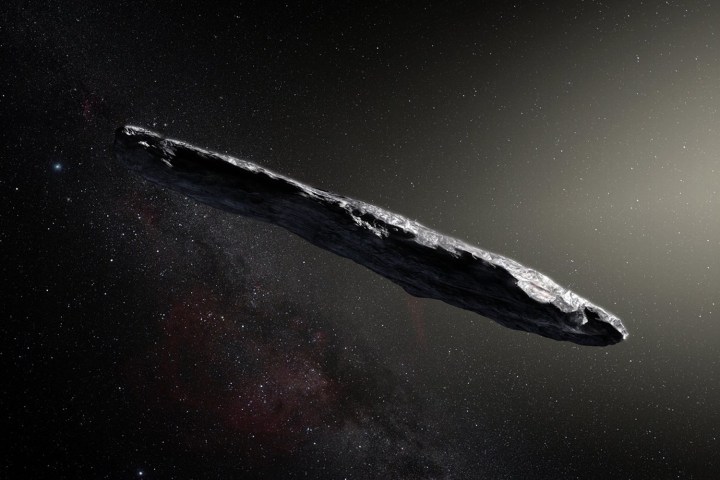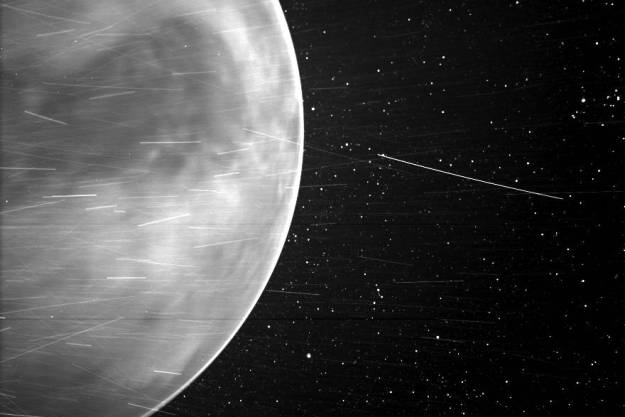
First appearing to Hawaii’s Pan-STARRS 1 telescope as a faint light dashing across the sky on October 19, the fast-paced object was initially identified as a comet but was later reclassified as an asteroid named 1I/2017 U1 or, the far more fun to say moniker, `Oumuamua.
But, while every other comet and asteroid known to astronomers has originated from within our solar system, there was something about `Oumuamua that pegged it as a foreigner. No, it wasn’t it’s accent — its orbit was unlike those of known comets and asteroids. It’s tough to measure an object that’s nearly 100 times our distance from the sun so, over the next couple of days, astronomers crunched calculations to determine precisely where the asteroid was headed and from whence it came. The answer was, without a doubt, interstellar space.
The astronomers didn’t have much time to study the object before it left the solar system. They promptly fired up the European Space Observatory’s (ESO) Very Large Telescope to make some observations.
“We had to act quickly,” ESO team member Olivier Hainaut said in a statement. “`Oumuamua had already passed its closest point to the sun and was heading back into interstellar space.”
The team turned its telescope toward the distant asteroid in order to measure its orbit, brightness, and color with more accuracy than it could be observed by smaller telescopes. By combining images captured by various large telescopes, the astronomers found that the object’s brightness changes drastically as it rotates, suggesting that it had both an unusual origin and an extraordinary shape.
“This unusually large variation in brightness means that the object is highly elongated,” said Karen Meech, project lead from the Institute for Astronomy, in Hawaii, “about 10 times as long as it is wide, with a complex, convoluted shape. We also found that it has a dark red color, similar to objects in the outer solar system, and confirmed that it is completely inert, without the faintest hint of dust around it.”
Interstellar asteroids pass through our inner solar system about every year, according to astronomers, but they’ve been out of our observational reach until now thanks in part to the capability of telescopes like the Pan-STARRS-1.
“We are continuing to observe this unique object,” Hainaut said, “and we hope to more accurately pin down where it came from and where it is going next on its tour of the galaxy. And now that we have found the first interstellar rock, we are getting ready for the next ones!”
Editors' Recommendations
- The solar eclipse isn’t the only thing to enjoy in the skies in April
- This awesome asteroid impact simulator isn’t for the faint-hearted
- Go on a ‘Grand Tour’ of the outer solar system with these Hubble images
- This tiny satellite will use a solar sail to investigate an asteroid
- Outside the solar eclipse zone? Here’s how to watch it online


